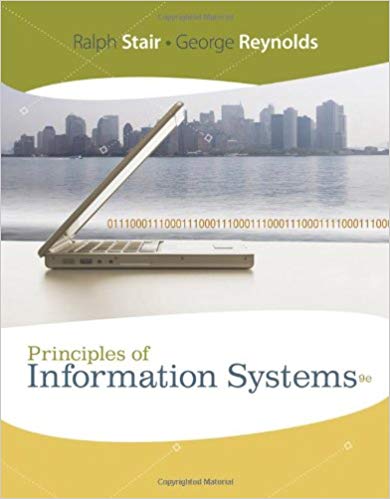Question:
Procter & Gamble (P&G) owns a large
portfolio of familiar brands such as Pampers, Tide, Bounty, Folgers, Pringles, Charmin, and Crest. P&G operates in more than 80 countries worldwide, with net sales increasing continuously over the past ten years to over $76 billion in 2007. Procter & Gamble's CEO, A.G. Lafley, believes in communication and collaboration. He is pushing P&G IT Innovation Manager Joe Schueller to find more effective and innovative ways for P&G's 138,000 employees to collaborate online. Naturally, Schueller looked immediately to Web 2.0 technologies for ideas. When applied to an enterprise, Web 2.0 technologies are referred to as Enterprise 2.0. Schueller is not a fan of e-mail. He sees it as a barrier to employees' use of more effective means of communication. Replying to all recipients of a message ends up wasting the time of people who do not need to receive, read, and respond to the message. Instead Schueller has equipped P&G employees with easy access to a corporate blog. For some types of group communications, Schueller finds blogs the ideal tool. Information is not forced on people. Those interested can follow the blog and post comments to add to the dialog. Schueller is harnessing the power of the wiki as a content and knowledge management system. Members of the organization who have valuable knowledge about P&G topics can post articles and advice. That helps corporate knowledge stay within the company, even when knowledgeable employees leave. P&G banked on Microsoft products to provide most of its Enterprise 2.0 functionality. Microsoft Live Communications Server provides instant messaging, unified communications, and presence-the ability to access communications services from any location. Live Meeting provides Web conferencing, and SharePoint provides a platform for content management and collaboration. Roughly 80,000 P&G employees use corporate instant messaging tools. Besides using Microsoft products, P&G also uses software and tools from other vendors for its Enterprise 2.0 investments. For example, P&G uses a product from Connectbeam that works with Google search tools to allow employees to share bookmarks and tag articles, pages, and documents with descriptive words to make information easier to find. P&G has launched a corporate social networking site so that employees can let others know who they are and in which areas of corporate activities they are involved. The goal is to encourage employees to easily find others with expert knowledge. All of these Enterprise 2.0 applications are accessed through a unified portal that also includes RSS feeds of business news. P&G is serving as inspiration to other companies who are developing an interest in Enterprise 2.0. Information systems departments see Web 2.0 technologies as a chance to provide real value to the organization. Bank of America, Boeing, the CIA, FedEx, Morgan Stanley, and Pfizer are examining Schueller's example. Motorola has also invested in Enterprise 2.0, with an intranet that includes 4,400 blogs and 4,200 wiki pages.
Discussion Questions
1. What qualities of Web 2.0 applications are appealing for enterprise use?
2. Why might a company not want to use Web 2.0 applications?
Critical Thinking Questions
1. How can each of the five Enterprise 2.0 applications used by P&G help its employees be more effective and efficient?
2. Compare and contrast e-mail, IM, and blogs as tools for effective communications.
Portfolio
A portfolio is a grouping of financial assets such as stocks, bonds, commodities, currencies and cash equivalents, as well as their fund counterparts, including mutual, exchange-traded and closed funds. A portfolio can also consist of non-publicly...







